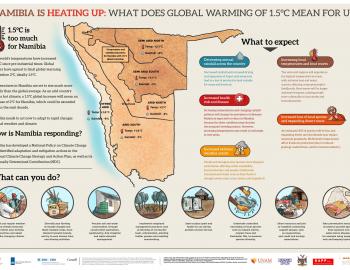Heat wave in Phalodi, India, 19 May 2016
Heat wave in Phalodi, India, 19 May 2016
On Thursday 19 May 2016, India experienced an all-time record high temperature for any calendar day. The high temperature reached 51°C in the city of Phalodi in the Jodhpur district of the state of Rajasthan. By some accounts it was the third-highest temperature ever documented globally. It was so hot that many residents of this city of about 50,000 simply remained indoors. Those who did venture outside in Gujarat’s Valsad found their sandals sticking to molten roads.
Temperatures were high across much of Rajasthan on that day, with a majority of stations recording maximum temperatures above 46°C. The state capital of Jaipur saw its hottest day in the past 11 years, with a maximum temperature of 46.5°C, while Delhi, India’s capital, reached 46.8°C.
The Raising Risk Awareness Project - delivered by CDKN with the World Weather Attribution initiative - undertook an analysis of whether human-induced climate change had contributed to the heat wave event - to inform decision-makers whether such heat waves are more likely to happen in the future. The analysis found that:
- Consistent with human-caused climate change, annual mean temperatures across India are increasing.
- Heat waves in a relatively small area of India are becoming more frequent and more intense, but this is not true for most of the country.
- On 19 May 2016, the city of Phalodi in Rajasthan set an all-time record for any calendar day, hitting 51°C.
- This analysis used peer-reviewed methods to see if climate change is affecting the risk of record heat like that on 19 May 2016 in north-western India, and like that of a similar one-day heat event in Andhra Pradesh in May 2015.
- The analysis did not find that human-induced climate change played a role in these individual heat waves. This runs counter to studies done on similar extreme heat events in other parts of the world.
- The lack of a detectable climate change trend may be due to the masking effect of aerosols on warming, and on irrigation use.



